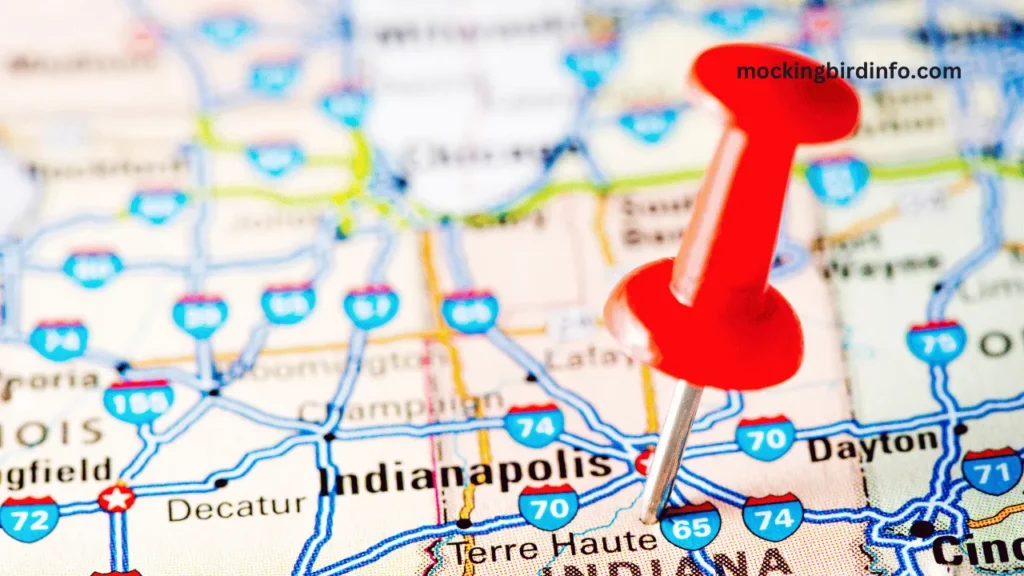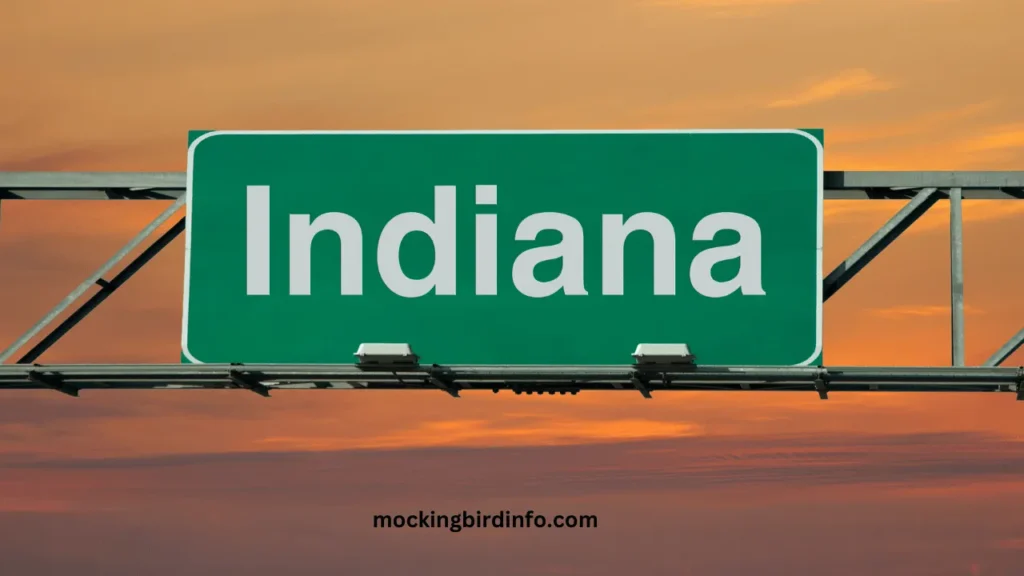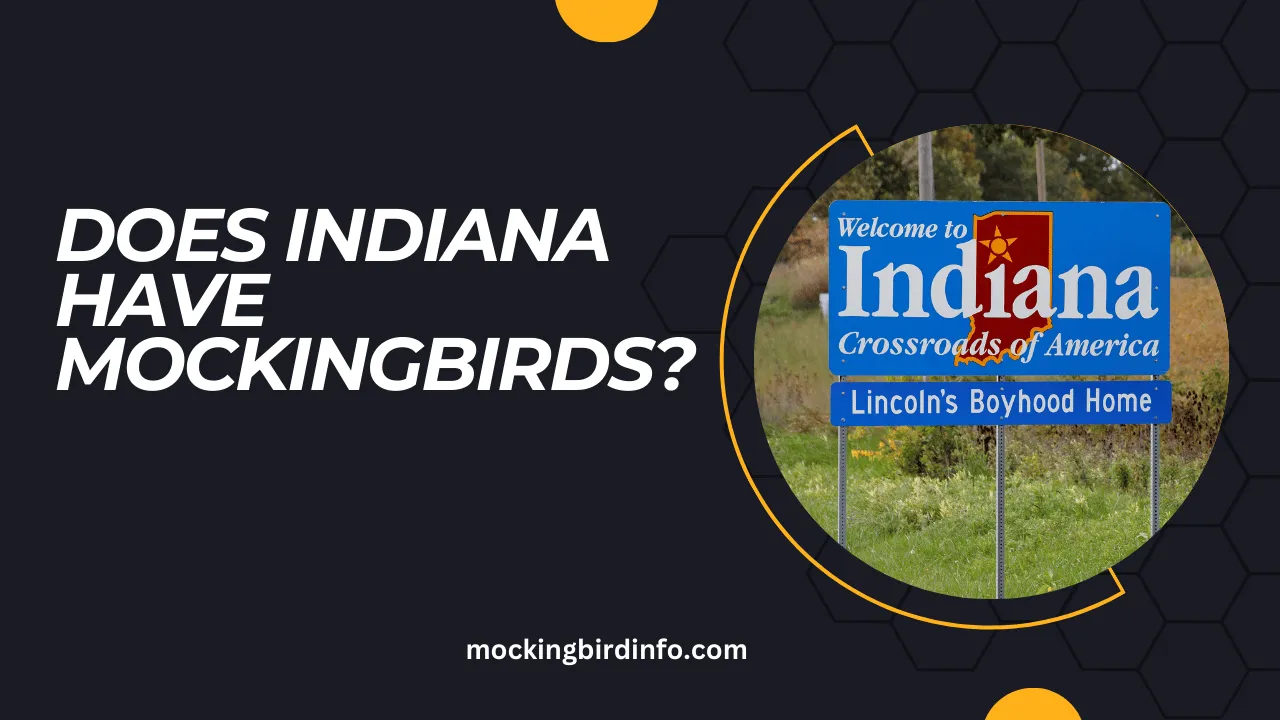The Northern Mockingbird, with its talent for mimicry and striking white-winged display, is an iconic bird of the Americas. Its songs echo across open landscapes, suburban yards, and urban parks, bringing life to even the quietest corners.
But if you’ve ever heard the melodic trills or seen the bold territorial displays of these birds in Indiana, you might wonder: “Do mockingbirds actually live here?” The answer is yes, although they weren’t always a part of Indiana’s natural bird population.
Mockingbirds are not native to Indiana, but over the years, they’ve made their way into the state, carving out a niche in its ecosystems. While they may not be as widespread as in the southern United States, Indiana now has established breeding populations of these charismatic birds.
Their presence raises intriguing questions about their journey to the state, their role in local habitats, and the impact they may have on native wildlife.
In this article, we’ll delve into the fascinating history of mockingbird introductions in Indiana, explore their current distribution, and examine their effects on the environment.
We’ll also touch on conservation considerations, helping you understand how these birds fit into the broader tapestry of Indiana’s ecosystems. Let’s explore how these remarkable songbirds have claimed their place in Indiana.

Contents
History of Mockingbird Introductions
The Northern Mockingbird’s journey into Indiana is a story of adaptability and human influence. Historically, mockingbirds were primarily found in the southern United States, thriving in warm climates and open woodlands.
However, changes in agriculture, urbanization, and human interventions during the 19th and 20th centuries allowed them to expand northward.
Some early introductions of mockingbirds to Indiana were likely unintentional, facilitated by their natural range expansion due to increased food availability and milder winters.
Their adaptability to urban and suburban environments also played a role, as they easily adjusted to habitats with scattered shrubs and fruit-bearing trees.
Over time, these birds began establishing breeding populations in parts of Indiana, especially in areas with abundant resources. The success of mockingbirds in Indiana is largely due to their behavioral flexibility.
They are aggressive in defending territories, efficient at finding diverse food sources, and skilled at avoiding predators. These traits have allowed them to thrive even in areas where native bird populations face challenges.
Current Distribution in Indiana
Mockingbirds are now a familiar sight in southern and central Indiana, where their populations are more concentrated. Cities such as Indianapolis, Bloomington, and Evansville have reported consistent sightings, particularly in suburban neighborhoods and parklands.
In rural areas, they are often found near open fields, hedgerows, and orchards. The population density of mockingbirds in Indiana varies by region.
They are more common in urban and suburban environments, where food sources like berries and insects are abundant. However, their numbers decrease in the northern parts of the state, where harsher winters may limit their survival and breeding success.
Seasonally, mockingbirds in Indiana tend to remain year-round residents, as they do not migrate long distances. However, some may shift slightly southward during exceptionally cold winters, returning to Indiana as spring brings warmer weather and plentiful resources.

Impact on Native Ecosystems
The arrival of mockingbirds in Indiana has introduced both benefits and challenges to local ecosystems. On one hand, these birds play a positive role in seed dispersal, spreading the seeds of fruit-bearing plants and contributing to plant biodiversity.
Their consumption of insects, such as grasshoppers and beetles, also helps control pest populations. However, their presence can lead to competition with native bird species for resources like nesting sites and food.
Mockingbirds are known for their aggressive territorial behavior, which may displace smaller, less dominant bird species. This territoriality can disrupt the natural balance in areas where space and resources are limited.
Another potential concern is their impact on nest predation. While mockingbirds primarily eat insects and fruits, they may occasionally prey on the eggs or young of other birds.
This behavior, though not a significant part of their diet, could pose risks to already vulnerable native bird populations.
Conservation Considerations
As a non-native species in Indiana, mockingbirds require careful monitoring to ensure their presence does not negatively impact the state’s native ecosystems.
Conservationists emphasize the importance of tracking population trends and studying the interactions between mockingbirds and other bird species to assess any long-term ecological effects.
Public education plays a key role in promoting responsible bird conservation. Raising awareness about the importance of maintaining native habitats and preventing the release of non-native species is essential to protecting Indiana’s biodiversity.
Encouraging homeowners to plant native vegetation and create bird-friendly environments can benefit both mockingbirds and native bird species.
Conservation strategies should focus on restoring habitats for native birds, mitigating habitat loss, and addressing threats such as urbanization and climate change.
While mockingbirds are fascinating additions to Indiana’s avifauna, efforts to preserve the state’s ecological balance must prioritize the needs of native wildlife.
Observing Mockingbirds in Indiana
Spotting mockingbirds in Indiana can be a rewarding experience for birdwatchers and nature enthusiasts. These birds are often seen in urban parks, residential areas, and edge habitats where open spaces meet shrubs or small trees.
Their distinct behavior makes them easy to identify: watch for their white wing patches flashing during flight or their bold territorial displays as they chase off intruders.
Mockingbirds are best known for their vocal mimicry, imitating the songs of other birds, frogs, and even mechanical sounds. If you hear a bird repeating a series of varied tunes, there’s a good chance it’s a mockingbird.
They are particularly vocal during the breeding season, from late spring to early summer. For ethical birdwatching, remember to observe from a distance and avoid disturbing their nests.
Mockingbirds are fiercely protective of their young and may perceive humans as threats. By respecting their space, you can enjoy their antics without impacting their natural behavior.
Conclusion
Mockingbirds have established themselves as a unique part of Indiana’s bird population, despite not being native to the state. Their adaptability, vocal mimicry, and bold territorial nature make them fascinating birds to observe and study.
From their early introductions to their current distribution across Indiana, mockingbirds offer valuable insights into how species adapt to new environments.
While mockingbirds bring ecological benefits like seed dispersal and insect control, their presence also highlights the importance of monitoring the balance between native and introduced species.
As they continue to thrive in Indiana, conservation efforts must prioritize habitat protection and support native bird populations to maintain the state’s biodiversity.
Whether you’re a seasoned birdwatcher or simply enjoy the occasional chirping in your backyard, spotting a mockingbird in Indiana is a reminder of nature’s resilience and adaptability.
By appreciating these remarkable birds and taking steps to protect their habitats, we can ensure that Indiana’s ecosystems remain vibrant and diverse for generations to come.
FAQs
1. Are mockingbirds native to Indiana?
No, mockingbirds are not native to Indiana, but they have established breeding populations in certain areas.
2. Where can I find mockingbirds in Indiana?
Mockingbirds are most commonly found in southern and central Indiana, particularly in urban and suburban areas.
3. What do mockingbirds eat in Indiana?
Mockingbirds eat a mix of fruits, berries, and insects, making them omnivores with a diverse diet.
4. Do mockingbirds migrate in Indiana?
Mockingbirds in Indiana are generally year-round residents, although some may move south during severe winters.
5. Are mockingbirds aggressive?
Yes, mockingbirds are known for their aggressive territorial behavior, especially during nesting season.
6. How can I attract mockingbirds to my yard?
Plant fruiting shrubs, provide water sources, and ensure there are open spaces with small trees or hedges for nesting.








